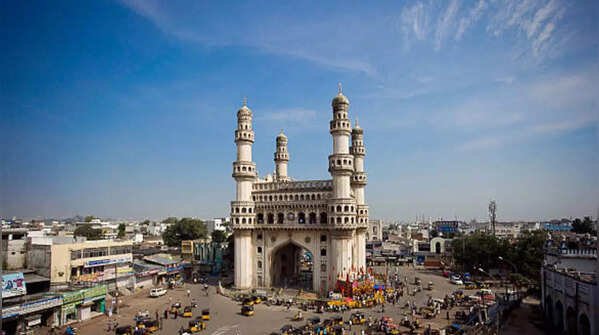10 iconic Indian heritage sites and who built them

Heritage Sites in India
India is one country known for its religious and cultural diversity. The believers and followers of these faiths, be they kings or normal men, have always believed in celebrating them by erecting gigantic architectural symbols for them. But have you ever wondered who created these heritage sites that we see as iconic symbols of the country today?

Konark Sun Temple, Odisha
Specifically designed to capture the first rays of sunrise, the Konark Temple in Odisha was commissioned in the 13th century by King Narasimhadeva I. The chariot-shaped temple hails Surya, the Sun God in stone and symbolism.

Red Fort, Delhi
This massive monument made of red sandstone has been the defining symbol of Delhi in many films and movies. It was built in 1648 by Shah Jahan as the Mughal capital and still stands tall as a royal structure.

Charminar, Hyderabad
Over the years, Charminar has become a global icon for Hyderabad. The monument whose name means four pillars was built as a monument and mosque in 1591 by Muhammad Quli Qutb Shah to mark the end of a deadly plague that had spread in the city.

Kahjuraho Temples, Madhya Pradesh
Defined by UNESCO as a World Heritage Site in 1986. These groups of temples were built by the Chandela rulers between 950-1050 AD and are known for their intricate sculptures symbolising the time of royal rule.

Gateway of India, Mumbai
The Gateway of India is a beautiful icon near the Mumbai waters. Designed by George Witter in 1924, the arch was created to commemorate the visit of British royalty and later stood tall as the symbolic exit point of British rule in 1948.

Mysore Palace, Karnataka
Also known as Amba Vilas Palace, the Mysore Palace was the official residence of the Wadiyar dynasty. It was rebuilt in 1912 by Maharaja Krishnaraja Wadiyar IV after a fire.

Fatehpur Sikri, Uttar Pradesh
Very few know that Fatehpur Sikri was a Mughal capital for some time before Akbar shifted it to Lahore in 1585. The red sandstone monument was founded by the Mughal emperor in the 16th century in order to honour the Sufi Saint Salim Chishti.

Hampi, Karnataka
Hampi was the capital of the Vijayanagara empire and was bustling with temples, bazaars and luxury. The temples in the city such as the Virupaksha Temple were built by the kings of the dynasty in the 14th century.

Qutub Minar, Delhi
A symbol of Islamic rule in India, the Qutub Minar's construction was started by Qutub-ud-din Aibak in 1192 and completed by Iltutmish and Firoz Shah Tughlaq in 1368.

Taj Mahal, Agra
Undoubtedly the most popular monument of India, the Taj Mahal is one of the seven wonders of the world. It stands as a symbol of love created in white marble by Mughal emperor Shah Jahan for his late wife Mumtaz Mahal in 1632.








